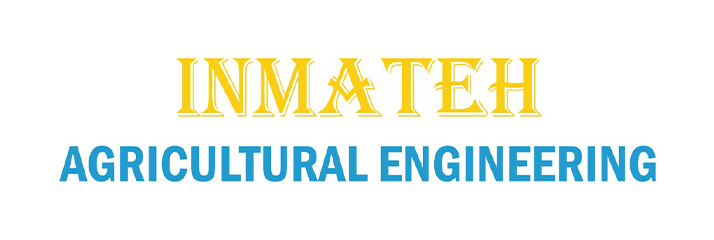EXPERIMENTAL INVESTIGATION OF BIONIC SOIL-ENGAGING BLADES FOR SOIL ADHESION REDUCTION BY SIMULATING ARMADILLIDIUM VULGARE BODY SURFACE
بررسی تجربی تیغههای خاکورز بایونیک به منظور کاهش چسبندگی خاک با شبیهسازی سطح بدن ARMADILLIDIUM VULGARE
DOI : https://doi.org/10.35633/inmateh-60-11
Authors
Abstract
Soil adhesion is a physical phenomenon which results in undesirable effects including increment in drag force and energy consumption of cutting or tillage tools. One method to reduce the soil adhesion is biomimetics, i.e., focusing on the technique soil-burrowing animals’ benefit. In this study, three types of blade were designed and built: flat blade, corrugated blade and a combination of flat and corrugated blades. The corrugated blade was simulated from Armadillidium vulgare body surface geometrical shape. Experimental results showed that in dry soil, flat and corrugated blades required similar drag force while the combined blade showed higher drag force requirements. In wet soil, the corrugated blade resulted in the lowest drag force, which was due to faster movement of soil layer on the blade surface. Drag force of the corrugated blade was lower than the half of the drag force of two other blades at travel speed of 0.04 m/s. Besides, the drag force of corrugated blade decreased by increasing the blade travel speed. Furthermore, in wet soil, the energy consumption of the corrugated blade at the travel speeds of 0.02 and 0.04 m/s was 66% and 83% lower than the flat blade, respectively.
Abstract in Persian





